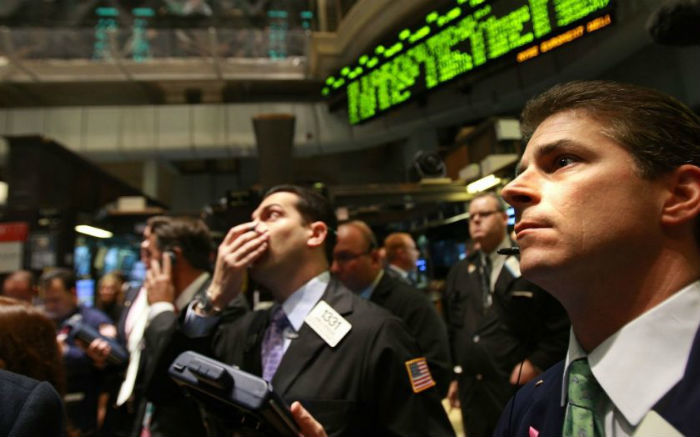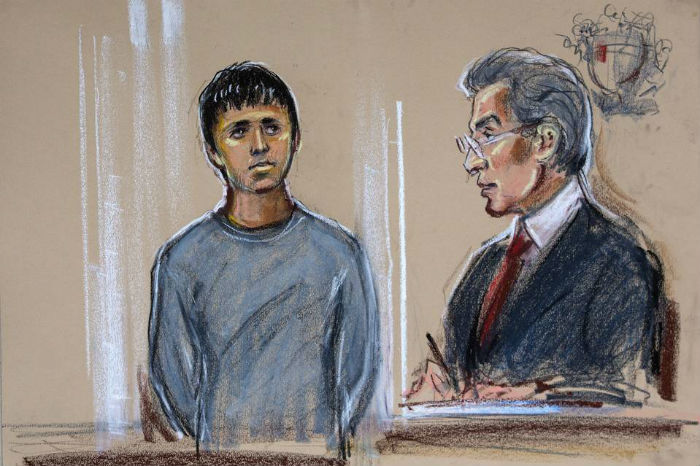As a mysterious trader and his algorithm caused the largest stock exchange crash

In May 2010, one of the largest stock exchange crashes occurred - in a matter of minutes the market lost a trillion dollars. This event was named Flash Crash, and one of its main perpetrators was the authorities of the United States and Great Britain called a modest trader from London. We present to your attention an adapted translation of the story of the Bloomberg publication about the main character of this story.
The story of one of the most dramatic moments in the whole history of Wall Street began in a modest house on the western outskirts of London, where the noise of aircraft going down to land at Heathrow is constantly heard. It was here that trader Navinder Singh Sarao lived, and until this day he did not stand out from thousands like him.
')
But now, according to the US and UK authorities, that day more than five years ago, Sarao “helped” the Dow Jones index to make an incredible instantaneous drop of 1000 points - now this collapse is known as an “instant collapse” or flash crash. According to regulators, the trader is guilty of issuing one of the five applications for sale, which caused the subsequent madness.

Dow Jones Falls During Flash Crash
In April 2015, Sarao was arrested by the British authorities at the request of the United States - now the question of his extradition is being decided. However, so far there is no clarity with this case - the decision will be made only in 2016.
The arrest of the trader has caused a large number of public questions - there is no evidence of his work for large financial companies in the United States and Britain. At the time of the flash crash, he worked with a small private prop-trading firm and cleared transactions through MF Global Holdings Ltd, a now-not-working company headed by renowned American financier John Cartin (Jon Corzine). Sarao's neighbors say what neighbors usually say in such cases: he was quiet, kept himself apart, no problems arose with him.
$ 40 million
Nevertheless, the authorities are confident that in reality everything was not quite so, and in a few years of market manipulations using algorithms, Sarao illegally earned $ 40 million.
He caused that famous failure not alone, regulators say, not without the participation of other players - for example, Waddel & Reed Financial Inc. mutual fund from Overland Park in Kansas.
With all this, flash crash was just a technical failure — a failure that posed fundamental questions about how vulnerable today's financial markets are to the face of the high-speed computerized trading that now dominates them.

Navinder Singh Sarao
Who "passed" Sarao
About Navinder Singh Sarao and his transactions are still little known, in addition to the information voiced in a London court and contained in the request of the US Department of Justice. A related civil suit filed by the US Commodity Futures Trading Commission sheds additional light on this case. It began to unwind thanks to the efforts of the whistleblower, who conducted a "serious original analysis" and presented his findings to the Commission, said Shayne Stevenson, a lawyer from Seattle, representing the interests of the same whistleblower.
According to the statements of the American authorities, over the past six years, Sarao has driven regulators by the nose with the help of his software for manipulating financial markets. He is also accused of spoofing - the illegal issuing of fraudulent orders to buy or sell shares, which are then canceled before they are executed, but they create false impressions from other market participants about the relevance of a particular action.
According to the Commodity Futures Commission, in May 2010, the actions of the trader created an imbalance in the derivatives market, which then spread to the stock market, which ultimately led to a general collapse.
Introvert Trader
“We believe and intend to prove that his actions had, at a minimum, an extremely serious influence on the current situation and led to a failure,” said Aytan Golman, director of the Commission’s law enforcement practice.
According to a man who knew Sarao, while trading on the stock exchange, he was concentrated and locked up inside himself, fencing off the outside world with headphones. On the screen of his computer almost always flashed the futures data of the S & P 500 index, and all his communications with people were reduced to communication about work — for example, installing new programs on his computer.
When he allegedly began to manipulate the market in 2009, he used the company's software, which he then asked to modify in such a way that he could not only automatically place orders, but also instantly cancel them. At one point, he even asked the developer for the code of the trading application, explaining that he would like to play with him on his own by making a new version - this is the version of the authorities.
Cancel orders
In the year preceding the May crash of the Dow Jones, Sarao had already fallen on the radar of regulatory agencies. Exchanges in the United States and Europe noted that he constantly exposes and then quickly cancels a large number of orders — this information is contained in the testimony that was leaked to the press, collected by the FBI.
The CME, which trades derivatives related to the S & P 500 index, contacted Sarao about its trades, after realizing that many of its orders had an impact on the opening prices of the trading day.
According to the FBI, in an email sent in March 2010, Sarao explained his actions with a simple desire “to show a friend what happens to the supply on the market for 24 hours a day under the influence of high-frequency geeks”. He then wondered if the CME’s actions would contribute to “the end of mass market manipulation by HFT traders”.
"Flooded" market
On May 6, 2010, on the day when flash crash occurred, the CME sent Sarao another message. It said that all orders sent to the CME electronic platform should be formed “in good faith and with the real intention of making a fair transaction,” the FBI testifies.
On the same day, Sarao and his company Nav Sarao Futures Limited Plc used layering and spoofing algorithms to trade S & P 500 E-mini futures. The volume of orders amounted to about $ 200 million, set for the imminent fall of the market - which ranged from 20% to 29% of all sales orders at that time. After placing orders, they were re-posted or modified 19,000 times until permanently canceled.
Such activity created an imbalance that “affected market conditions”, which resulted in a fall in the value of a futures contract, according to the commission on commodity futures.
The collapse shocked investors, got into all the world news, leaving bewildered regulators to deal with the causes of the incident.

About three weeks later, Sarao told his broker that he had just called the CME and said “kiss me in the ass,” the FBI said in a statement.
But no one stopped him even after that - among about two dozen accusations are also related to the deals of March 2014. Now, however, if he is still extradited to the United States, the trader faces a maximum term of 20 years for fraud using electronic means, 25 years for manipulation on the stock exchange, and for spoofing he can get another 10 years and a $ 1 million fine.
Related materials:
Source: https://habr.com/ru/post/367603/
All Articles